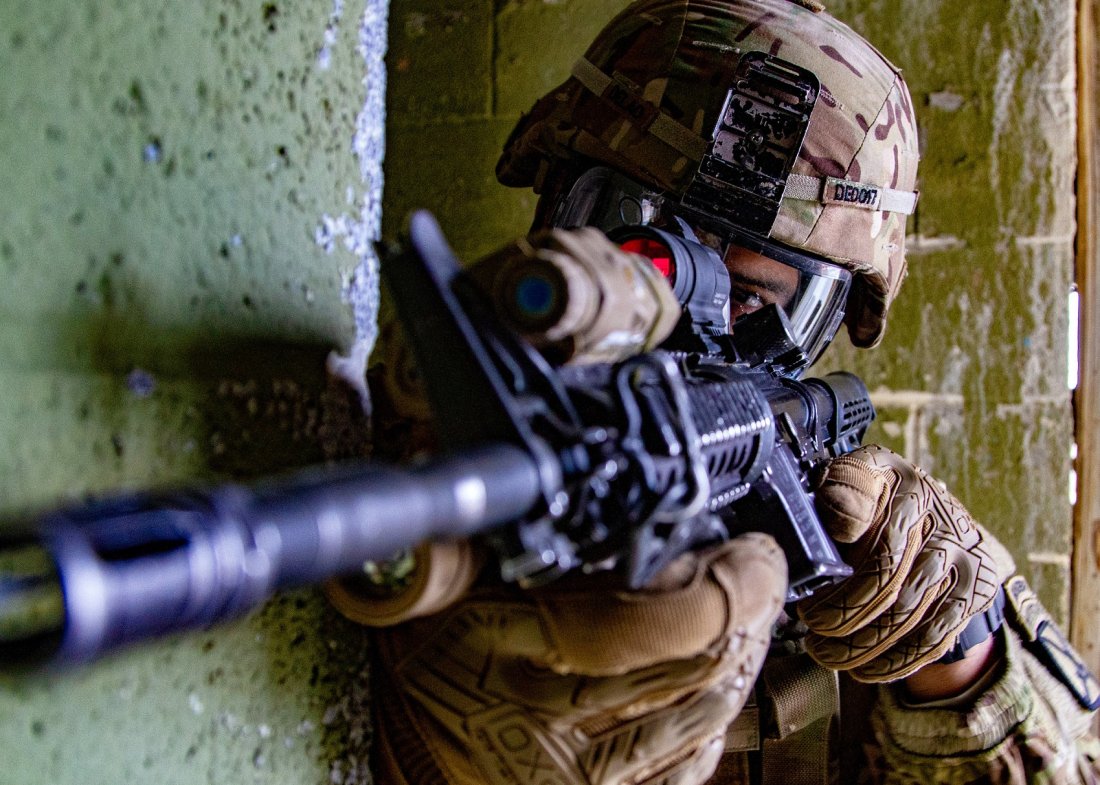by Michael Peck
 The Army already has a robot test vehicle: an armed, remote-controlled M113 armored personnel carrier, and is vigorously pursuing autonomous trucks that can haul supplies without a driver.
The Army already has a robot test vehicle: an armed, remote-controlled M113 armored personnel carrier, and is vigorously pursuing autonomous trucks that can haul supplies without a driver.
The U.S. Army already fields an impressive array of weapons. But as the U.S. Army prepares itself for potential conflicts against high-tech Russian and Chinese armies, the Army is working on a slew of new systems ranging from tanks to missiles.
The result will be the gradual disappearance of the familiar weapons born during the Cold War -- the Abrams tanks and Apache helicopters -- that symbolize America's arsenal. In their place will be a new generation of weapons.
The polio vaccine, developed by Dr. Jonas Salk, is declared safe and effective.
Jim Gary's "Twentieth Century Dinosaurs" opens at the Smithsonian Museum in Washington, D.C.. He is the only sculptor ever invited to present a solo exhibition there.
(This first appeared late last year.)
Here are five that we will likely see in the coming years:
1. Next-Generation Combat Vehicle:
Since the 1980s, the backbone of the Army's armor force has been the M-1 Abrams tank and M-2 Bradley infantry fighting vehicle. Both designs have been upgraded and modernized over the years -- the latest M1A2 has far better sensors and electronics than a 1980s M1 -- but these are essentially 40-year-old designs meant to stop a Soviet tank assault across the Fulda Gap. The counterinsurgency "small wars" of the past two decades has made armor secondary to infantry boots on the ground, but as the U.S. refocuses on the prospect of mechanized "big war" against Russia and China, there is new love for tanks.
The Army's Next-Generation Combat Vehicle program aims to create a 21st Century armor fleet, including a new main battle tank, infantry fighting vehicle, self-propelled gun and even robot tanks. The defense industry is pitching several designs, such as BAE's Swedish-designed CV90 infantry carrier. But whatever vehicles are chosen will reflect the enormous changes in technology over the past four decades: active protection systems to stop anti-tank missiles, tactical networks, and even drones as an integral part of the vehicle's systems. And for a really futuristic design, take a look at DARPA's Ground X-Vehicle Technologies program, and the conceptual art of a tank that looks like a dune buggy.
2. Maneuver-Short-Range Air Defense (MSHORAD):
Snuggled under the protection of the U.S. Air Force, and facing low-tech opponents like the Taliban, the Army's tactical air defenses have lapsed since the Cold War. But with the proliferation of drones, and the threat of high-tech Russian and Chinese aircraft and helicopters, the skies aren't looking so friendly for the ground-pounders. For now, the Army is opting for a stopgap solution that mounts Stinger anti-aircraft missiles on a Stryker light armored vehicle. But the Army plans to mount directed energy weapons -- lasers -- on the Stryker, which can engage targets more quickly than missiles, and don't run out of ammunition (except for electricity).
3. Robot tanks:
These were once the stuff of science fiction. But the fact that the U.S. Army has a program called Optionally Manned Fighting Vehicle attests to the rise of the machine. The Army already has a robot test vehicle: an armed, remote-controlled M113 armored personnel carrier, and is vigorously pursuing autonomous trucks that can haul supplies without a driver.
4. Future Vertical Lift:
Just as Cold War-era M1 tanks are being replaced, so are the Apache and Blackhawk helicopters that comprised Army aviation. The Future Vertical Lift program aims to develop a family of new helicopters, including an attack/reconnaissance machine.
5. Long-range artillery and hypersonic missiles:
Accustomed to plentiful air support from the Air Force, the Army's artillery has lagged behind that of Russia, which is fielding several new howitzers. But instead of big guns that can shoot out to 20 miles like the M109A6 Paladin155-millimeter self-propelled howitzer, the Army is talking of cannon that can hurl a shell a thousand miles. Whatever the exact range will be, it's likely the Army will be deploying artillery that can reach hundreds of miles, which vastly extends the lethal zone in which enemy troops must operate.
No comments:
Post a Comment